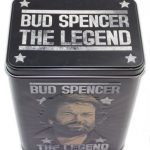Discover The Solution To Empty Food Stuff: Transform Your Pantry And Reap The Benefits!
Empty Food Stuff: A Deeper Look Into the World of Nutrition and Sustainability
Greetings, Creative Peoples! In this article, we will delve into the fascinating and ever-evolving concept of empty food stuff. With the increasing popularity of sustainable living and mindful eating, understanding the implications of empty food stuff has become more important than ever before. Join us as we explore the what, who, when, where, why, and how of this intriguing topic, and discover the advantages, disadvantages, and frequently asked questions surrounding it. So, let’s dive in!
2 Picture Gallery: Discover The Solution To Empty Food Stuff: Transform Your Pantry And Reap The Benefits!


Introduction
Empty food stuff refers to food products that lack essential nutrients and provide little to no nutritional value. These items often contain excessive amounts of unhealthy additives, preservatives, and artificial flavors, which can be detrimental to our health in the long run. The increasing consumption of empty food stuff has raised concerns among nutritionists, scientists, and environmentalists around the world.

Image Source: bigstockphoto.com
As the demand for convenience foods rises, it becomes crucial to understand the consequences of relying heavily on empty food stuff. This article aims to shed light on the various aspects of this phenomenon, from its origins to its impact on our well-being and the environment. By gaining a comprehensive understanding of empty food stuff, we can make informed choices about our dietary habits and contribute to a healthier, more sustainable future.
What is Empty Food Stuff?
Empty food stuff encompasses a wide range of processed and packaged food products that provide little nutritional value. These items often have high calorie, sugar, and sodium content, with minimal amounts of essential vitamins, minerals, and fiber. Examples of empty food stuff include sugary snacks, processed meats, sugary drinks, and highly refined carbohydrates.

Image Source: alamy.com
🔍 Important Point: Empty food stuff is synonymous with nutritionally void food products that contribute to a poor diet and can have negative health implications.
Who Consumes Empty Food Stuff?
Empty food stuff consumption is prevalent across all age groups and socioeconomic backgrounds. However, certain demographics, such as children and young adults, are particularly vulnerable to the influence of marketing strategies and peer pressure, leading to increased consumption of these products. Additionally, individuals with limited access to fresh, whole foods may rely more heavily on empty food stuff due to its affordability and convenience.
🔍 Important Point: Empty food stuff consumption is a widespread issue affecting individuals from various demographics, emphasizing the need for awareness and education.
When Did Empty Food Stuff Gain Popularity?
The rise of empty food stuff can be attributed to the rapid industrialization and globalization of the food industry. With advancements in food processing and mass production, the availability of empty food stuff has skyrocketed in recent decades. Busy lifestyles, changes in eating habits, and the proliferation of fast-food chains have further contributed to the popularity of these products.
🔍 Important Point: The prevalence of empty food stuff in our diets escalated with the modernization of the food industry and societal shifts in eating patterns.
Where Can Empty Food Stuff Be Found?
Empty food stuff can be found in supermarkets, convenience stores, fast-food restaurants, and even online platforms. These products often dominate the center aisles of grocery stores, enticing consumers with their attractive packaging and promises of convenience. They are readily available and heavily marketed, making it challenging to avoid them altogether.
🔍 Important Point: Empty food stuff is pervasive in our modern food environment, making it crucial to be vigilant when making purchasing decisions.
Why Should We Be Concerned About Empty Food Stuff?
The consumption of empty food stuff has several detrimental effects on both our health and the environment. From a nutritional standpoint, relying on these products can lead to nutrient deficiencies, weight gain, and an increased risk of chronic diseases such as obesity, diabetes, and heart disease. Moreover, the production, packaging, and transportation of empty food stuff contribute to greenhouse gas emissions, deforestation, and other environmental issues.
🔍 Important Point: Empty food stuff poses significant threats to human health and the planet, necessitating a shift towards more sustainable and nutritious dietary choices.
How Can We Reduce Our Reliance on Empty Food Stuff?
Reducing our reliance on empty food stuff requires a combination of individual choices and systemic changes. By prioritizing whole, unprocessed foods, incorporating more fruits and vegetables into our diets, and cooking meals at home, we can take significant steps towards a healthier lifestyle. Additionally, supporting local farmers, advocating for transparent food labeling, and demanding sustainable practices from food manufacturers play a crucial role in promoting change at a larger scale.
🔍 Important Point: Empty food stuff reduction involves both personal actions and collective efforts to create a more sustainable and nourishing food system for all.
Advantages and Disadvantages of Empty Food Stuff
Empty food stuff, like any other phenomenon, comes with its own set of advantages and disadvantages. Let’s explore them in detail below:
Advantages of Empty Food Stuff
1. Convenience: Empty food stuff offers quick and easy meal options for individuals with busy schedules.
2. Affordability: Many empty food stuff products are cheaper compared to fresh, whole foods, making them more accessible to certain demographics.
3. Extended Shelf Life: Due to their high preservative content, empty food stuff often has a longer shelf life, reducing food waste.
4. Variety: Empty food stuff is available in a wide range of flavors, textures, and cuisines, providing diverse options for consumers.
5. Accessibility: Empty food stuff is widely available in various retail outlets, ensuring its availability even in remote areas.
Disadvantages of Empty Food Stuff
1. Nutrient Deficiency: Relying on empty food stuff can lead to inadequate intake of essential nutrients, resulting in various health issues.
2. Health Risks: The excessive sugar, sodium, and unhealthy additives in empty food stuff can contribute to obesity, diabetes, and heart disease.
3. Environmental Impact: The production and packaging of empty food stuff contribute to pollution, deforestation, and climate change.
4. Lack of Satiety: Empty food stuff often lacks fiber and protein, leading to increased hunger and overconsumption.
5. Hidden Ingredients: Some empty food stuff may contain hidden ingredients, allergens, or genetically modified organisms (GMOs) without clear labeling.
Frequently Asked Questions (FAQ)
1. Q: Can empty food stuff be part of a healthy diet?
A: While empty food stuff should be consumed in moderation, a healthy diet primarily consists of fresh, whole foods rich in nutrients.
2. Q: Are all processed foods considered empty food stuff?
A: Not all processed foods are empty food stuff. Some processed foods can still provide essential nutrients when chosen wisely.
3. Q: Can empty food stuff be harmful to children’s health?
A: Excessive consumption of empty food stuff can significantly impact children’s health, leading to nutrient deficiencies and an increased risk of chronic diseases.
4. Q: Are there any sustainable alternatives to empty food stuff?
A: Yes, there are plenty of sustainable alternatives, such as whole grains, legumes, fruits, and vegetables, that provide essential nutrients while minimizing environmental impact.
5. Q: How can we identify empty food stuff?
A: Reading nutrition labels, checking ingredient lists, and opting for products with minimal additives and artificial flavors can help identify empty food stuff.
Conclusion
In conclusion, empty food stuff presents a significant challenge in our quest for optimal nutrition and sustainability. By understanding the implications of consuming these products, we can make informed choices that benefit our health and the environment. Let us strive towards a future where nutritious, whole foods take center stage, and empty food stuff becomes a thing of the past.
Remember, it’s never too late to start making positive changes. Begin by incorporating more fresh, unprocessed foods into your diet and supporting local, sustainable food systems. Together, we can create a healthier and more nourishing world for ourselves and future generations.
Final Remarks
Disclaimer: The information provided in this article is for educational purposes only and is not intended to replace professional medical or nutritional advice. Always consult with a qualified healthcare provider or nutritionist before making any significant changes to your diet or lifestyle.
This post topic: Stuff


